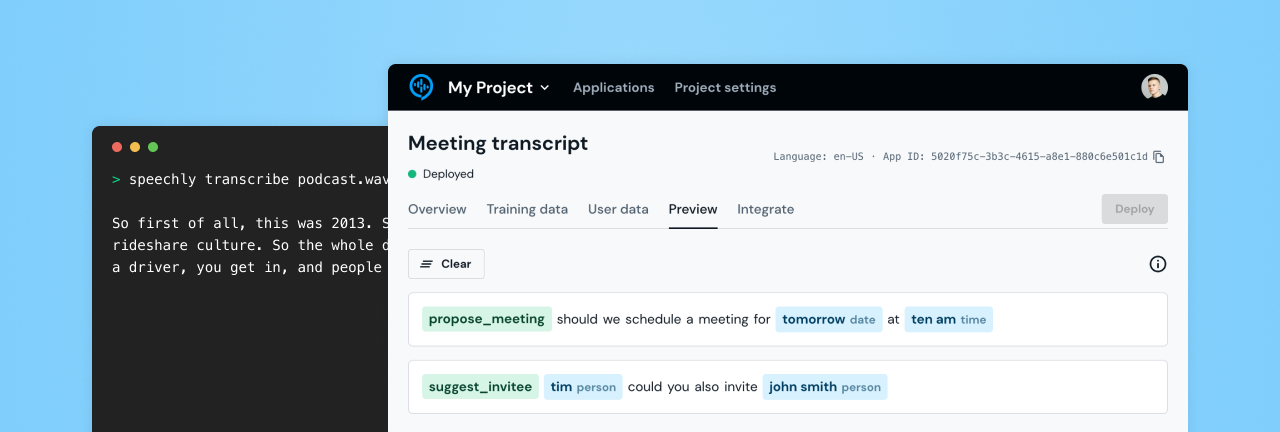Speechly Documentation
Speechly offers superfast speech recognition that can be deployed on-device, on-premise or in the cloud. It's fast, accurate, private and cost-efficient by design.

Getting started with Speechly
Learn how to create a Speechly application and transcribe both live and pre-recorded audio.
Features
Models and languages
Speechly offers models of different sizes and capabilities for various languages.
Model adaptation
Increase model accuracy by adapting it for your use case or domain.
Speechly On-device
Transcribe live streaming audio in real-time right on the users’ device.
Speechly On-premise
Transcribe pre-recorded audio asynchronously in a customized installation.
Evaluate ASR accuracy
Evaluate how accurately your Speechly application transcribes audio.
Using Speechly CLI
Manage your projects and applications without leaving the terminal.
Guides
Using Speechly Batch API
Learn how to use Batch API for transcribing pre-recorded audio files asynchronously.
Deploying Speechly On-device
Get started with on-device transcription on iOS, Android and C.
Reference docs
Speechly Decoder API
API reference for Speechly Decoder, the libary used for on-device speech recognition.
Speechly Batch API
The APIs used for asynchronous speech recognition.
Speechly CLI
List of all Speechly CLI commands and their usage.
Speechly Annotation Language
SAL is a powerful syntax designed to make annotating example utterances faster and easier.